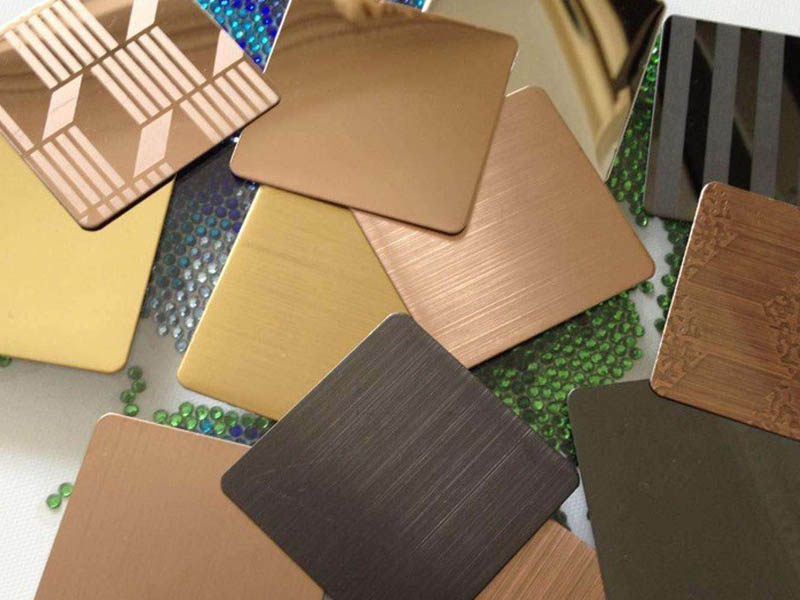There are several coloring methods for stainless steel parts
1. Electroplating
Electroplating: The process of attaching a metal film to the surface of metal or other materials by electrolysis. It can prevent corrosion, improve wear resistance, electrical conductivity, reflectivity and enhance aesthetics.
2. Water plating
It does not rely on external power supply in the aqueous solution, but only relies on the reducing agent in the plating solution to carry out the chemical reduction reaction, so that the metal ions are continuously reduced on the autocatalytic surface to form a metal plating layer.
3. Fluorocarbon paint
Refers to coatings with fluororesin as the main film-forming substance, also known as fluorocarbon paint, fluorocoating, and fluororesin coating.
4. Spray paint
The paint is sprayed into a mist with compressed air and applied to the stainless steel plate to form different colors.

Additional:
The current color stainless steel plate is colorful, which is a very good decoration material. The color stainless steel plate and the color surface layer can withstand the temperature of 200 ℃, the salt spray corrosion resistance is better than ordinary stainless steel, and the color stainless steel plate has abrasion resistance and scratch resistance. Equivalent to the performance of foil coating gold.
The color stainless steel plate also has the characteristics of strong corrosion resistance, high mechanical performance, long-lasting color surface layer, and color change with different illumination angles. When the color stainless steel plate is bent at 90°C, the color layer will not be damaged, used for decoration of hall wall panels, ceilings, elevator car panels, car box panels, architectural decoration, signboards, etc., colored stainless steel panels are generally used to decorate walls.
评论
发表评论